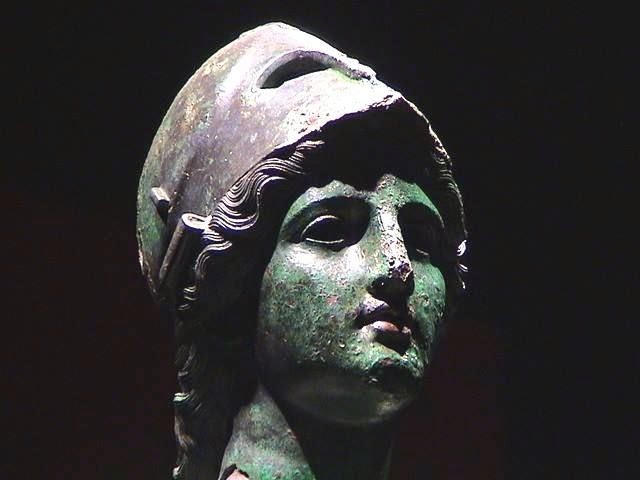Heritage of the Roman Empire
The NMWA asks, 'What did the Romans ever do for us?'
Anyone who’s ever seen the Monty Python movie Life of Brian will remember that classic scene where a group of Judean revolutionaries are complaining about Roman rule and taxation. One of them asks, “And what have they given us in return?” only to be answered by a long list of improvements brought by the Romans—aqueducts, sanitation, roads, irrigation, etc.
Supported by the Italian government and supplied by Italian museums, “Heritage of the Ancient Roman Empire” at the National Museum of Western Art sets out to make similar positive points about the glory of the Roman Empire. Using sculptures, frescoes and other items, it gives an impression of a cultured and benign civilization that doesn’t altogether square with Rome’s well-known history of aggression and expansion.
Despite the great age of the objects, their high level of artistry and realism strikes a very modern note. Selene and Endymion (1st century), a fresco panel recovered from the city of Pompeii, shows the moon goddess and her mortal lover modeled with light and shade to create a feeling of three-dimensionality. The Minerva of Arezzo (3rd century BC), a recently restored, life-sized bronze statue of the goddess of wisdom, adopts a stately but naturalistic pose. Among the beautiful details that bring this work to life are the toes peeping out from under the lifelike folds in her garment.
The Minerva has been around since its rediscovery in 1541, but the exhibition also features a spectacular new find, Dionysus with Panther (1st century BC). This marble statue of a naked youth (identified as the Greek wine god by the vine leaves in his hair) was discovered by a team of archaeologists in 2003. The statue is almost complete, except for the hands and the parts below the knees, which have been recreated by restorers.
But even without the original feet, the work still conveys the power of the contrapposto, an Italian term used to describe the stance of certain statues. By placing most of the weight on one leg and giving a slight twist to the hips and the shoulders, the figure loses the inherent stiffness of marble and is imbued with an almost human sense of relaxed dynamism. This is exactly the same technique used by Michelangelo in his famous statue of David.
The fact that these two statues stand out as the stars of this exhibition is revealing about the nature of Roman power. Both works show the degree to which the Romans were indebted to the Hellenistic culture of the Greek world. The Minerva is thought to be an early Italian copy of an Athenian statue, while the Dionysius was apparently made in Greece or in one of the Greek colonies in Sicily or southern Italy.
In a similar way, many of the benefits bestowed by Rome can ultimately be traced to other corners of the Mediterranean that were conquered by the Roman legions. This suggests that the true “heritage” of Rome was not its creativity but its militaristic and unifying aspect. While this had short-term benefits for some of the conquered, the long-term consequences for European civilization were disastrous.
The litheness and vitality of the Greek sculpture contrasts with the stiffness, bulkiness and pomposity of the more purely Roman works. Seated Portrait of an Emperor (1st century) is believed to show Augustus, the man responsible for establishing the Roman Empire on the ruins of the Roman Republic. While employing many of the best techniques of Hellenistic art, the statue is nevertheless infused with the sternness typical of the Romans. Over the next few centuries of centralized power, this characteristic saw art in the Roman world become increasingly stiff, formal and lifeless. This—and not the borrowings from the Greeks—was the true heritage of the Roman Empire.
C.B.Liddell
Metropolis
5th November, 2009
Labels
2009,
Augustus,
Classical art,
contrapposto,
fresco,
Hellenistic art,
NMWA,
Pompeii,
Roman Empire,
Rome,
sculpture






















Post A Comment
No comments :